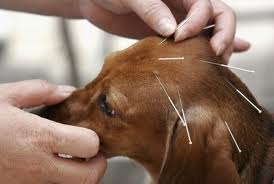Effects of transcutaneous auricular vagus nerve stimulation at left cymba concha on experimental pain, parasympathetic activity
Kristen Sparrow • June 08, 2024

 True prevention. In my book I highlight two studies in animals where acupuncture prevented an increase in stress response after startling the animal. This, to me, shows the power of prevention using acupuncture. It stabilized your stress response to that you don’t spin out. This is of utmost importance in understanding how acupuncture is so helpful for anxiety and panic attacks.
True prevention. In my book I highlight two studies in animals where acupuncture prevented an increase in stress response after startling the animal. This, to me, shows the power of prevention using acupuncture. It stabilized your stress response to that you don’t spin out. This is of utmost importance in understanding how acupuncture is so helpful for anxiety and panic attacks.Abstract
The aim of this study was to clarify the effects of transcutaneous auricular vagus nerve stimulation (taVNS) to the left cymba concha on the pain perception using nociceptive withdrawal reflex (NWR), which is known to be associated with chronic pain, and to investigate whether there is a relationship between taVNS-induced suppression of the NWR and parasympathetic activation. We applied either 3.0 mA, 100 Hz taVNS for 120 s on the left cymba concha (taVNS condition) or the left earlobe (Sham condition) for 20 healthy adults. NWR threshold was measured before (Baseline), immediately after (Post 0), 10 min (Post 10) and 30 min after (Post 30) stimulation. The NWR threshold was obtained from biceps femoris muscle by applying electrical stimulation to the sural nerve. During taVNS, electrocardiogram was recorded, and changes in autonomic nervous activity measured by heart rate variability (HRV) were analyzed. We found that the NWR thresholds at Post 10 and Post 30 increased compared with baseline in the taVNS group (10 min after: p = .008, 30 min after: p = .008). In addition, increased parasympathetic activity by taVNS correlated with a greater increase in NWR threshold at Post 10 and Post 30 (Post 10: p = .003; Post 30: p = .001). The present results of this single-blinded study demonstrate the pain-suppressing effect of taVNS on NWR threshold and suggest that the degree of parasympathetic activation during taVNS may predict the pain-suppressing effect of taVNS after its application.
Keywords: LF/HF; heart rate variability; nociceptive withdraw reflex; transcutaneous auricular vagus nerve stimulation; vagus afferent.

